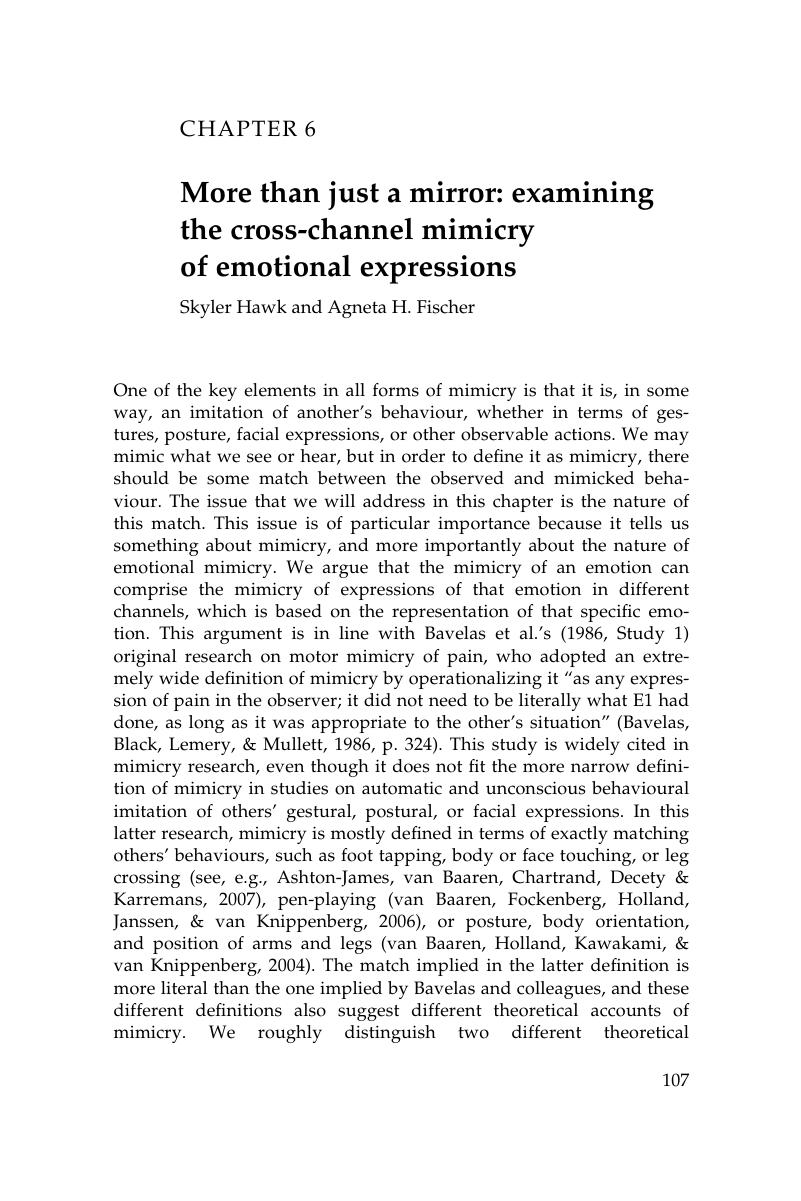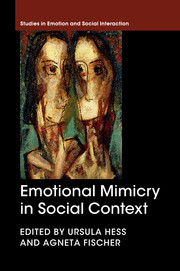Book contents
- Half title page
- Studies in Emotion and Social Interaction
- Title page
- Copyright page
- Contents
- Contents
- Contributors
- Introduction: why and how we mimic emotions
- Chapter 1 On the sharing of mind
- Chapter 2 The role of mimicry in understanding the emotions of others
- Chapter 3 Revisiting the Simulation of Smiles model: the what, when, and why of mimicking smiles
- Chapter 4 The neuroscience of mimicry during social interactions
- Chapter 5 The social dimension as antecedent and effect of emotional mimicry
- Chapter 6 More than just a mirror: examining the cross-channel mimicry of emotional expressions
- Chapter 7 Emotional mimicry: underlying mechanisms and individual differences
- Chapter 8 Mimicry, emotion, and social context: insights from typical and atypical humans, robots, and androids
- Chapter 9 The neurological basis of empathy and mimicry
- Chapter 10 Conclusion: toward a better understanding of emotional mimicry
- Index
- References
Chapter 6 - More than just a mirror: examining the cross-channel mimicry of emotional expressions
Published online by Cambridge University Press: 05 March 2016
- Half title page
- Studies in Emotion and Social Interaction
- Title page
- Copyright page
- Contents
- Contents
- Contributors
- Introduction: why and how we mimic emotions
- Chapter 1 On the sharing of mind
- Chapter 2 The role of mimicry in understanding the emotions of others
- Chapter 3 Revisiting the Simulation of Smiles model: the what, when, and why of mimicking smiles
- Chapter 4 The neuroscience of mimicry during social interactions
- Chapter 5 The social dimension as antecedent and effect of emotional mimicry
- Chapter 6 More than just a mirror: examining the cross-channel mimicry of emotional expressions
- Chapter 7 Emotional mimicry: underlying mechanisms and individual differences
- Chapter 8 Mimicry, emotion, and social context: insights from typical and atypical humans, robots, and androids
- Chapter 9 The neurological basis of empathy and mimicry
- Chapter 10 Conclusion: toward a better understanding of emotional mimicry
- Index
- References
Summary

- Type
- Chapter
- Information
- Emotional Mimicry in Social Context , pp. 107 - 124Publisher: Cambridge University PressPrint publication year: 2016
References
- 5
- Cited by



